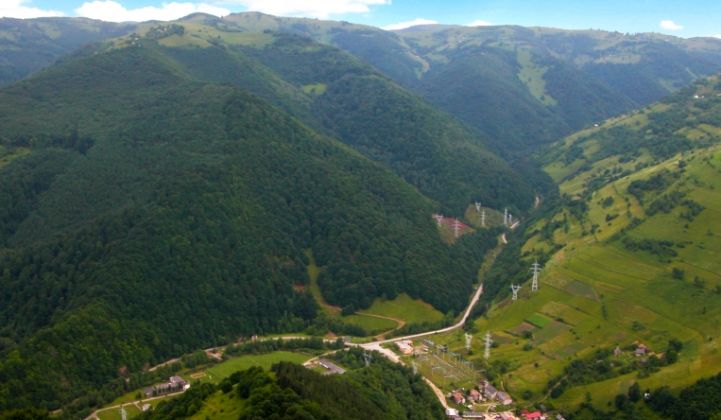Why are the Chinese so interested in Romanian pumped hydro?
Earlier this month Bloomberg reported that five Chinese consortia were lining up to invest in a $1.1 billion pumped hydro storage project that has been stalled for the last three decades.
The winning bidder or bidders are expected to kick-start construction of the 1-gigawatt Tarnita-Lapustesti pumped storage hydro power plant by the end of this year. Hidro Tarnita, the project developer, claims the five- to seven-year construction work will create nearly 4,050 jobs.
Ovidiu Demetrescu, Hidro Tarnita’s CEO, said all the project’s bidders were Chinese. “We addressed the opportunity of this project to all interested investors,” he said. “The Chinese companies were those that officially submitted the documentation in order to qualify in the bidding process. There is also interest on behalf of some international financial institutions.”
All the consortia involved, nevertheless, have a strong track record in hydropower development.
One involves the China Huadian Corporation companies China Huadian Engineering and Guizhou Wujiang Hydropower Development, which manage dams along China’s Wu River. Another comprises Huaneng Lancang River Hydropower and Hydrolancang International Energy.
China Gezhouba Group and Wuling Power Corporation are similarly both big dam builders, with the former being responsible for the Three Gorges Water Conservancy Project, the largest hydropower project in the world. And Sinohydro, which is partnering with Power China Huadong Engineering Corporation, is engaged in dam projects in Nigeria and Uganda.
The final consortium is made up of two divisions of Hanergy Holding Group, which has installed 6 gigawatts of hydro.
This experience partly explains why the companies might be keen to invest in the Tarnita-Lapustesti project, which has been on the drawing board since the 1980s. But Simon Bevan, head of the China-Britain Services Group at Grant Thornton in the U.K., sees a potentially much bigger strategic interest at play.
“Cleantech is very much in the China five-year plan as a strategically important industry, as it seeks to move up the value chain from being the world’s contract manufacturer,” he said. “This is partly because the country needs to clean up its industrial waste output domestically. Also, it is seen as the way forward globally, so there is a market for it.”
This means that companies in the sector can expect targeted help from the Chinese government and banks.
Furthermore, according to Bevan, “China also has a ‘grow global’ strategy. This is at least partly to derisk the domestic economy by investing the country’s U.S. dollar surplus abroad and probably also includes a Chinese desire to grow its international profile in a non-military, ‘imperial’ sense. Hence their greater economic and diplomatic influence is being seen.”
This, plus a track record in major infrastructure development, all helps clarify why the Chinese are happy to pile into a project that nobody else seems interested in. For Romania, meanwhile, it’s a great result.
Jump-starting a long-stalled project
The country, which currently has a single 53-gigawatt pumped hydro store at Sprâncenata, Giurgiu, has been pondering the viability of a pumped hydro storage plant at Tarnita Lake, in the Somesul Cald basin, since 1985. The location was one of 17 halted following a 10-year study by the Romanian Institute of Hydro Energy Studies and Design.
Since then, the project has been subject to a number of feasibility studies, but has failed to get off the ground. Hydro Tarnita was established in 2013 to finally move it forward. What might make a difference this time around is that the need for energy storage is growing in Romania just as much as it is across other Eastern European nations.
Hydro Tarnita’s investor kit describes the plant as a “key project considering the growing portfolio of electricity generation from renewable sources, requiring the installation of additional balancing capacity.”
The company’s business plan envisages the creation of a 10-million-cubic-meter reservoir linked to Tarnita Lake via four 250-megawatt turbines. First the project has to be financed, though. “The funding structure will be defined after the completion of the selection procedure,” said Demetrescu.
“We aim at having a mixed funding: the selected investors, international financial institutions, and other project finance sources such as syndicated bank lending. As usual for project finance raising, we will most likely end up with a mix of equity and various classes of debt instruments that will optimize the financials of the project.”
Clearly, part of that optimization will involve Chinese cash. And it may not be the last European project these investors get involved with, either.
“The Chinese companies that have submitted bids for the Tarnita-Lapustesti Pumped Storage Hydropower Plant are looking to invest their capital in good, sound projects within their area of expertise and with good return on investment,” Demetrescu said.



